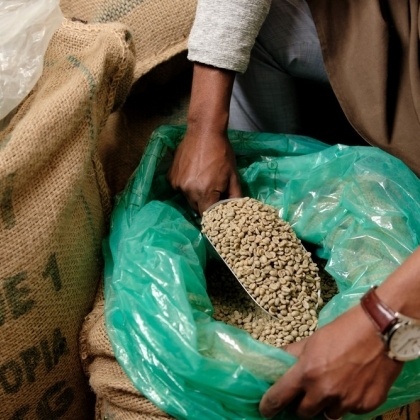Have you ever heard the term "shade tree" when talking about growing coffee?
The Arabica coffee tree grows in the shade of the forests in its native Ethiopia. Trees that provide shade are called shade trees.
Shade trees are sometimes used in coffee cultivation, following the natural environment.
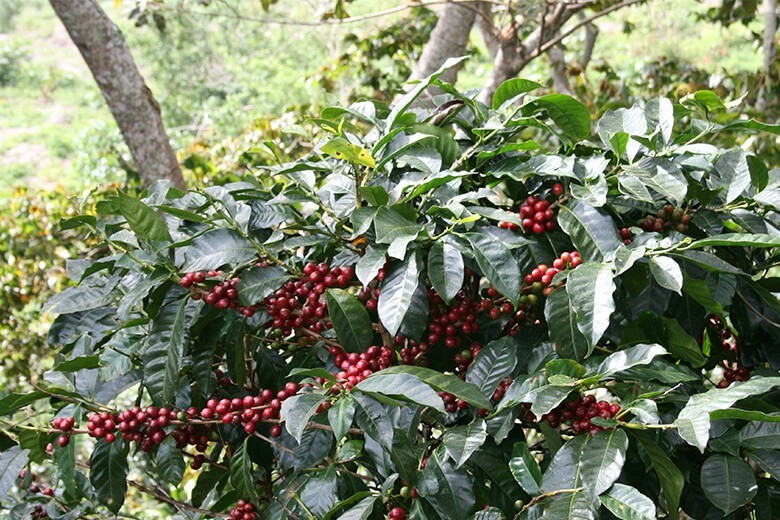 Coffee cultivation at Cotowa Farm in Panama. We place particular emphasis on environmental considerations, such as planting more than 500 fruit trees in the surrounding area, reducing water use, and protecting untouched forests.
Coffee cultivation at Cotowa Farm in Panama. We place particular emphasis on environmental considerations, such as planting more than 500 fruit trees in the surrounding area, reducing water use, and protecting untouched forests.The Arabica coffee tree has the characteristic that it does not require much sunlight.
However, a certain amount of sunlight is required. It is said that the yield of coffee will increase up to a certain amount of sunlight.
This shade tree is used to avoid strong direct Hikaru .
It is also said to have other effects such as protecting coffee plants from strong winds, protecting them from frost damage, and preserving and improving soil nutrients.
Trees of the legume family are often used as shade trees. This is because it allows adequate sunlight to pass through, does not require excessive moisture, and fallen leaves can be used as fertilizer.
Of course, each cultivation environment is different, so legume trees are not suitable everywhere.
In some areas, bananas and other plants are grown as shade trees.
By recreating the forest-like environment that was the original growing environment, the fruit becomes larger, the variation in ripeness is reduced, and the lifespan of the tree is increased, which also improves the quality of coffee beans. It is said to have good effects.
By recreating the forest-like environment that was the original growing environment, the fruit becomes larger, the variation in ripeness is reduced, and the lifespan of the tree is increased, which also improves the quality of coffee beans. It is said to have good effects.
Protection of the cultivation environment
Most coffee trees are grown in places where they have been transplanted by humans.
Therefore, cultivation is carried out in different environments depending on the production area.
In recent years, the focus has often been on protecting the environment surrounding the cultivation area (farmland), and efforts to grow coffee without destroying the natural environment as much as possible are attracting attention.
This type of environment is said to lead to the protection of biodiversity and be beneficial to the environment of the region as a whole.
Therefore, cultivation is carried out in different environments depending on the production area.
In recent years, the focus has often been on protecting the environment surrounding the cultivation area (farmland), and efforts to grow coffee without destroying the natural environment as much as possible are attracting attention.
This type of environment is said to lead to the protection of biodiversity and be beneficial to the environment of the region as a whole.
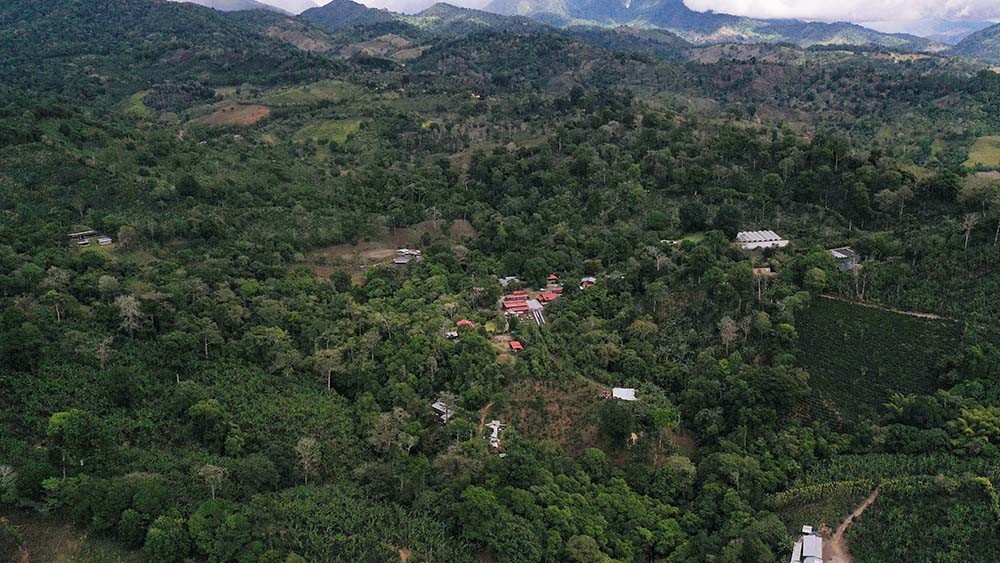 Hartman Farm in Panama has a farm in the forest. We also do eco tours.
Hartman Farm in Panama has a farm in the forest. We also do eco tours. However, not all cultivation areas are capable of such efforts.
It may be a place that was developed in ancient times, or it may be farmland that was used for other purposes.
Additionally, some cultivars are resistant to sunlight, and some can create shade with their own leaves.
There are such varieties that have been specially bred for cultivation.
From the perspective of the final quality of coffee beans, it is necessary to grow them in an appropriate cultivation environment that matches the cultivar, and a "shade tree" is not necessarily necessary.
By the way, shade trees are sometimes not used for reasons such as lack of sunlight due to foggy weather conditions, poor ventilation and overhumidity where mold is likely to grow, or unsuitable for harvesting.
It may be a place that was developed in ancient times, or it may be farmland that was used for other purposes.
Additionally, some cultivars are resistant to sunlight, and some can create shade with their own leaves.
There are such varieties that have been specially bred for cultivation.
From the perspective of the final quality of coffee beans, it is necessary to grow them in an appropriate cultivation environment that matches the cultivar, and a "shade tree" is not necessarily necessary.
By the way, shade trees are sometimes not used for reasons such as lack of sunlight due to foggy weather conditions, poor ventilation and overhumidity where mold is likely to grow, or unsuitable for harvesting.
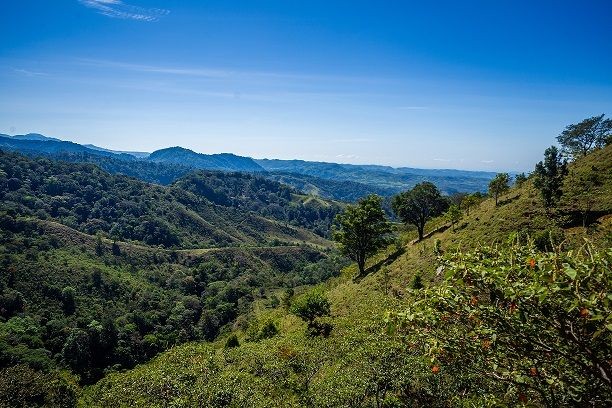 Shade trees are not used at Guarmo Farm, which is also owned by the Hartman family, due to the environment.
Shade trees are not used at Guarmo Farm, which is also owned by the Hartman family, due to the environment.Coffee tree cultivation spread to many regions
More than 200 years have passed since coffee was introduced to many cultivation areas around the 18th century, and varieties that are adapted to various cultivation environments have been created.
It is not true that coffee arabica can be grown in all tropical regions commonly referred to as the ``coffee belt.''
However, there are now many varieties that can grow in environments that are slightly different from those in primeval forests, and if they are close to the native species, which are called "original species," they should be cultivated in an environment similar to the forest. However, it can also be said that the coffee tree, which has been cultivated by humans for a long time, has gradually expanded its growing area.
It is not true that coffee arabica can be grown in all tropical regions commonly referred to as the ``coffee belt.''
However, there are now many varieties that can grow in environments that are slightly different from those in primeval forests, and if they are close to the native species, which are called "original species," they should be cultivated in an environment similar to the forest. However, it can also be said that the coffee tree, which has been cultivated by humans for a long time, has gradually expanded its growing area.
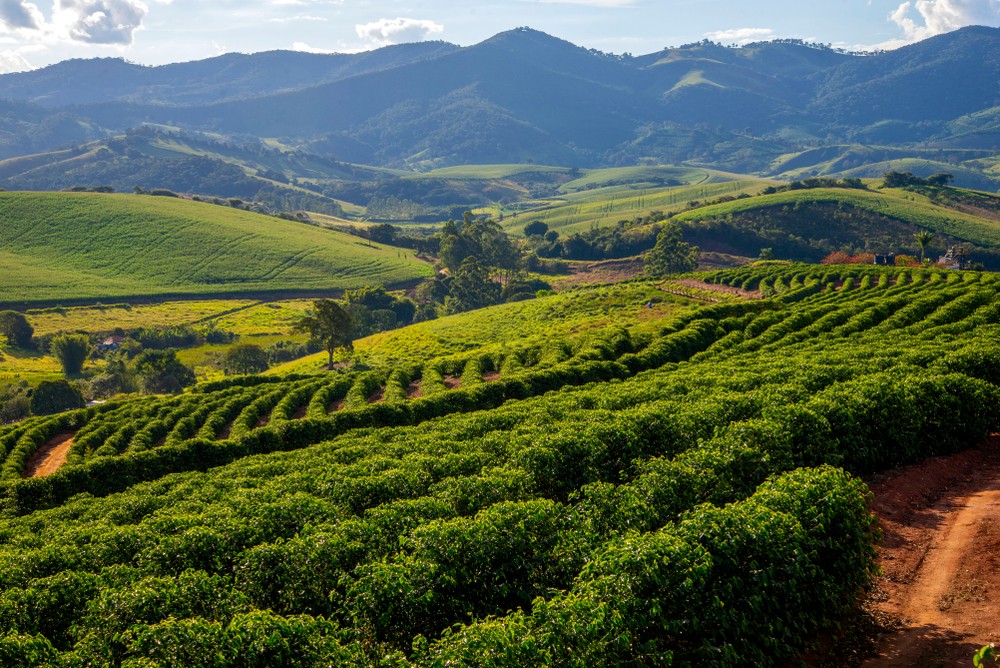 Shade trees are rarely used in Brazil's relatively low-lying plantations due to efficiency reasons.
Shade trees are rarely used in Brazil's relatively low-lying plantations due to efficiency reasons.Furthermore, while efforts to protect the local environment are important when it comes to cultivation, creating a forest-like environment using "shade trees" is not the only way to protect the local environment.
Various producers are implementing initiatives that suit their regions and actual circumstances, so I think it's important to learn about the initiatives of each farm and producer.
2024.1.13
CROWD ROASTER

